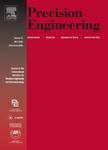版权所有:内蒙古大学图书馆 技术提供:维普资讯• 智图
内蒙古自治区呼和浩特市赛罕区大学西街235号 邮编: 010021

作者机构:Beckhoff Automat KK Nisseki Yokohama Bldg 18F1-1-8 Sakuragi ChoNaka Yokohama Kanagawa 2310062 Japan Univ Tokyo 4-6-1 KomabaMeguro Ku Tokyo 1538505 Japan
出 版 物:《PRECISION ENGINEERING-JOURNAL OF THE INTERNATIONAL SOCIETIES FOR PRECISION ENGINEERING AND NANOTECHNOLOGY》 (精密工程)
年 卷 期:2024年第85卷
页 面:337-356页
核心收录:
学科分类:08[工学] 080401[工学-精密仪器及机械] 0804[工学-仪器科学与技术] 0805[工学-材料科学与工程(可授工学、理学学位)] 0802[工学-机械工程] 081102[工学-检测技术与自动化装置] 0811[工学-控制科学与工程]
基 金:Beckhoff Automation K.K Grants-in-Aid for Scientific Research [23K26009] Funding Source: KAKEN
主 题:Machining Cutting force Vibration Acceleration sensor Milling process monitoring Signal analysis
摘 要:Recently, there has been a further demand for precise monitoring of milling process with a machine tool by a simple and cost-effective method. One of the ways for monitoring is to install acceleration sensors to the tool spindle and estimate cutting forces from the model of the tool spindle structure. This method generally allows stable monitoring of cutting forces for tools with large diameters. However, in case of using tools with small diameters, it is difficult to estimate the cutting force due to higher frequency vibrations generated near the tool center point. Therefore, to solve the problem, we propose a new monitoring method by signal analysis of acceleration sensors in this research. The problem is that the acceleration sensor signals contain two types of signals, such as acceleration change due to mechanical displacement of a tool spindle generated by cutting load and high frequency self-excited and forced vibration . In our method, we separate these two signals by using an approximation of sequential quadratic regression. From the former, cutting forces are estimated from equation of motions which are obtained in advance from frequency responses of the tool spindle, and from the latter, intensities of vibrations due to milling are estimated. This method was tested several milling patterns such as large cutting loads, fluctuations of cutting loads, and cutting during abnormal vibrations. As a result, we have achieved in-process monitoring of milling process not only in the X and Y directions, but also in the Z direction with a small radius ball end mill.